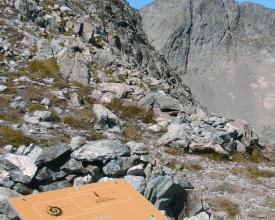Parque Europeo Marittime-Mercantour: cómo la conservación transfronteriza a largo plazo puede conducir a una estructura jurídica de gestión común

Partiendo de su contigüidad territorial y de su patrimonio natural y cultural común, los dos parques han creado un área protegida única de unos 1000 km² a través de la frontera F/I. Un largo proceso de asociación, generado en un principio por la necesidad de una gestión común de la fauna y la flora, condujo después al desarrollo sostenible y a una identidad visual común. Gracias a proyectos cada vez más integrados, desarrollaron una visión compartida y finalmente han creado una estructura jurídica común siguiendo un nuevo reglamento de la UE: AECT.
Impactos
Medio ambiente: gestión común de la población de cabra montés existente, reintroducción del quebrantahuesos, seguimiento común de la recolonización natural del lobo. Investigación científica transfronteriza, como el All Taxa Biological Inventory ATBI. Desarrollo sostenible: red de senderos, sistema común de señalización, turismo sostenible (los parques firmaron conjuntamente la Carta Europea de Turismo Sostenible EUROPARC y presentaron una estrategia y un plan de acción comunes para toda la zona transfronteriza). Financiación: Plan Transfronterizo Integrado (PTI) Marittime-Mercantour, 10 millones de euros gracias al programa europeo Interreg ALCOTRA. Consta de 6 proyectos temáticos integrados: investigación científica y conservación de la naturaleza, identidad cultural, gestión territorial, ecoturismo, movilidad suave y educación ambiental. Este Plan también ha estimulado la participación de la comunidad local. Gobernanza: en mayo de 2013 se constituyó oficialmente la AECT Marittime/Mercantour, dando origen al primer Parque Europeo y generando nuevos y ambiciosos objetivos como la inclusión en la Lista WH de la UNESCO. Esta idea implica ahora a otras cinco áreas protegidas italianas, creando un tramo continuo que comprende todas las sucesiones ecológicas desde la montaña más alta hasta el mar Mediterráneo. Incluido en 2013 en las listas indicativas de la UNESCO italiana y francesa como bien natural transfronterizo con el nombre de "los Alpes del mar".


